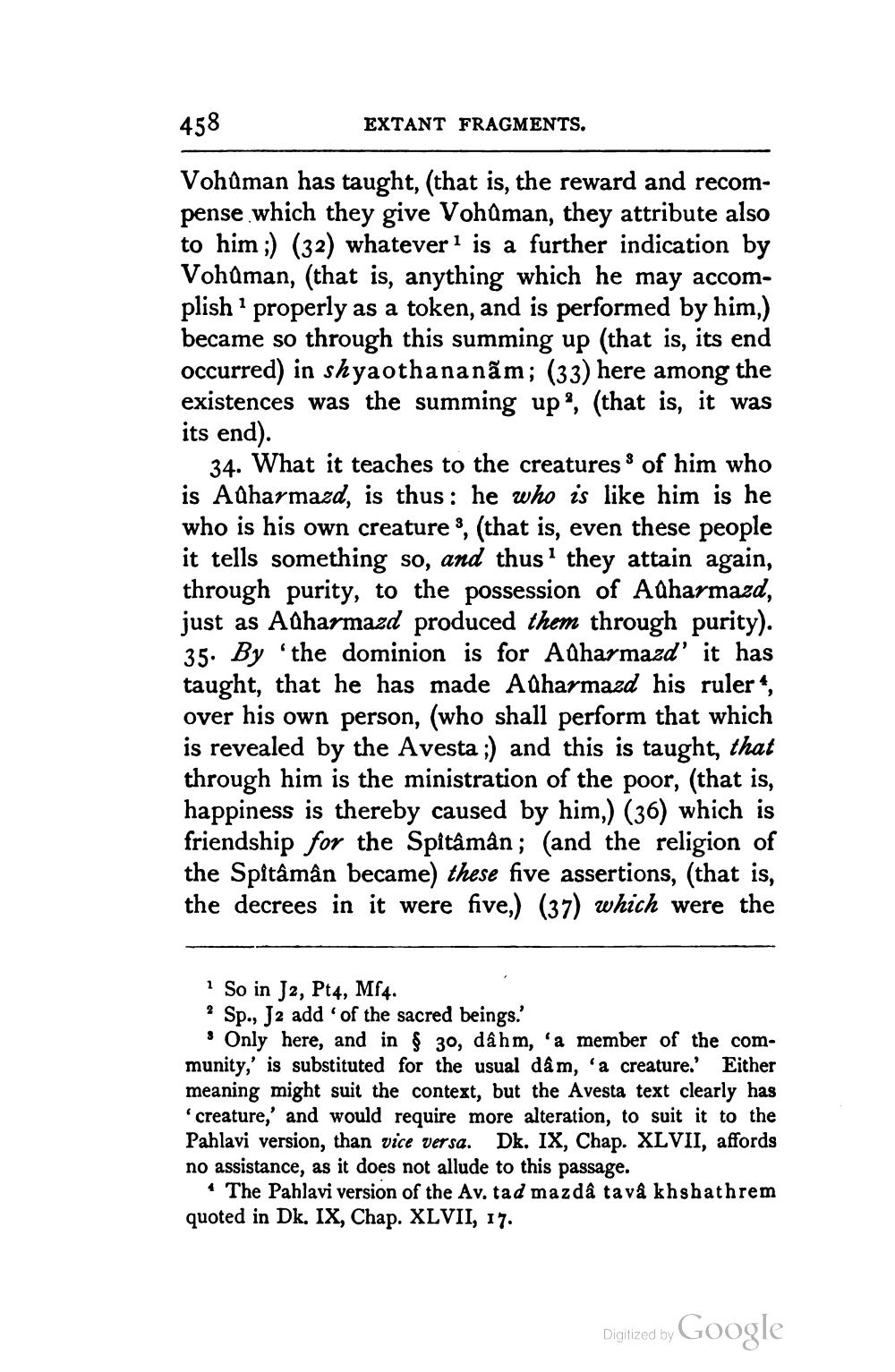________________
458
EXTANT FRAGMENTS.
Vohuman has taught, (that is, the reward and recompense which they give Vohûman, they attribute also to him ;) (32) whatever is a further indication by Vohman, (that is, anything which he may accomplish ? properly as a token, and is performed by him,) became so through this summing up (that is, its end occurred) in shyaothananām; (33) here among the existences was the summing up, (that is, it was its end).
34. What it teaches to the creatures of him who is Adharmazd, is thus: he who is like him is he who is his own creature 3, (that is, even these people it tells something so, and thus they attain again, through purity, to the possession of Adharmazd, just as Adharmazd produced them through purity). 35. By 'the dominion is for Adharmazd' it has taught, that he has made Adharmazd his ruler“, over his own person, (who shall perform that which is revealed by the Avesta ;) and this is taught, that through him is the ministration of the poor, (that is, happiness is thereby caused by him,) (36) which is friendship for the Spitâmân; (and the religion of the Spitâmân became) these five assertions, (that is, the decrees in it were five,) (37) which were the
? So in J2, Pt4, Mf4. ? Sp., J2 add of the sacred beings.
* Only here, and in $30, dâhm, 'a member of the community,' is substituted for the usual dam, 'a creature.' Either meaning might suit the context, but the Avesta text clearly has 'creature,' and would require more alteration, to suit it to the Pahlavi version, than vice versa. Dk. IX, Chap. XLVII, affords no assistance, as it does not allude to this passage.
· The Pahlavi version of the Av. tad mazda tavå khshathrem quoted in Dk. IX, Chap. XLVII, 17.
Digitized by Google




